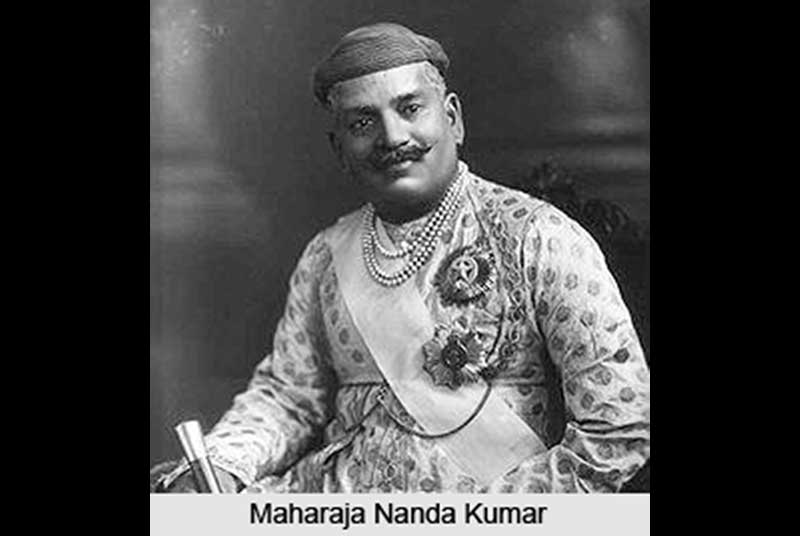
The farcical trial and execution of Maharaja Nandakumar was one of the most infamous episodes of the early days of the East India Company’s rule in India. Consequently, he was the first Indian to be hanged to death by the ruling British.
Born in Bhadrapur, now in Birbhum district of West Bengal, Nadakumar, also called Nuncomar, was conferred upon the title of ‘Maharaja’ by the sixteenth Mughal Emperor Shah Alam II in 1764, for his efficiency and loyalty. In his early life, he held posts under the Nawab of Murshidabad and after the Battle of Plassey, he was appointed by the East India Company as their collector of taxes for Burdwan, Nadia and Hoogly in 1764, after Warren Hastings resigned from the East India Company. However, when Hasting returned to India in 1773 as the Governor General of Bengal, Nanadkumar accused him of accepting a bribe from Mir Jafar’s widow Munny Begum for securing her the guardianship of the minor Nawab, Mubarak-ud-Daulah. Two days later, Nanda Kumar in another letter offered to appear before the Board and give evidence, both oral and documentary. Hastings’ rival, Philip Francis, took up the case in the Supreme Council of Bengal. However, empowered with an important official position and equipped with special powers granted by the Crown, Hastings could overrule the Council. Nevertheless, the matter did not end there. In order to take revenge, Warren Hastings brought a false allegation of fraud against Nanadkumar in 1775. Consequently, Nandakumar was tried in the court of Elijah Impey, India’s first Chief Justice and a schoolmate of Warren Hastings. In his vindictive judgment, Elijah Impey sentenced Maharaja Nandakumar to hang until death and the order was executed on 5 August 1775.

Judge Elijah put the noose around the neck of innocent Nanda Kumar to save the neck of his childhood pal Hastings. Later, both Elijah and Hastings were subjected to impeachment for this judicial murder in the House of Commons in 1787 and were acquitted.
Nandakumar, a respected person in his seventies, expressed his last desire to die near Aadi Ganga, so that his final rites could be performed at one of its ghats. He calmly walked up to the gallows without making a scene or hesitating in any way. A wooden plank was placed on the well to cover the hollow and the Raja had to climb up and stand on the plank. It was reported that, due to weakness and pain in his knees, he had some difficulty in climbing the stairs with his tied hands. He requested the sheriff to allow his own servant to tie the cloth over his face and as the noose was put around his neck, the plank was pushed out to make him hang from the make shift scaffold
Unfortunately, there is no document to point out the exact spot, where Maharaja Nandakumar was executed. According to a book, ‘Calcutta Old and New’ by Henry Evan Cotton, he was hanged at Coolybazar, a few steps from Fort William and close to the the Hastings Bridge. In fact, at the foot of the Hastings Bridge, there is a fenced traffic Island on St Georges Gate Road and inside the fenced area, there is a strange well-like structure. The only sign of importance of the circular structure is reflected in the fresh coat of blue and gaudy blue paint on its walls. A metal gate acts as the entrance to the well and a rusty lock prevents the access. While a wall surrounds the gallows, there is no plaque mentioning exactly what it was. The locals have no knowledge about the unfortunate incident of Maharaja Nandakumar, however they seem to be aware that the place was once used as a place for hanging by the British.
It is a pity that, neither the government nor any public body took any action till date, to put a plaque on the spot.
